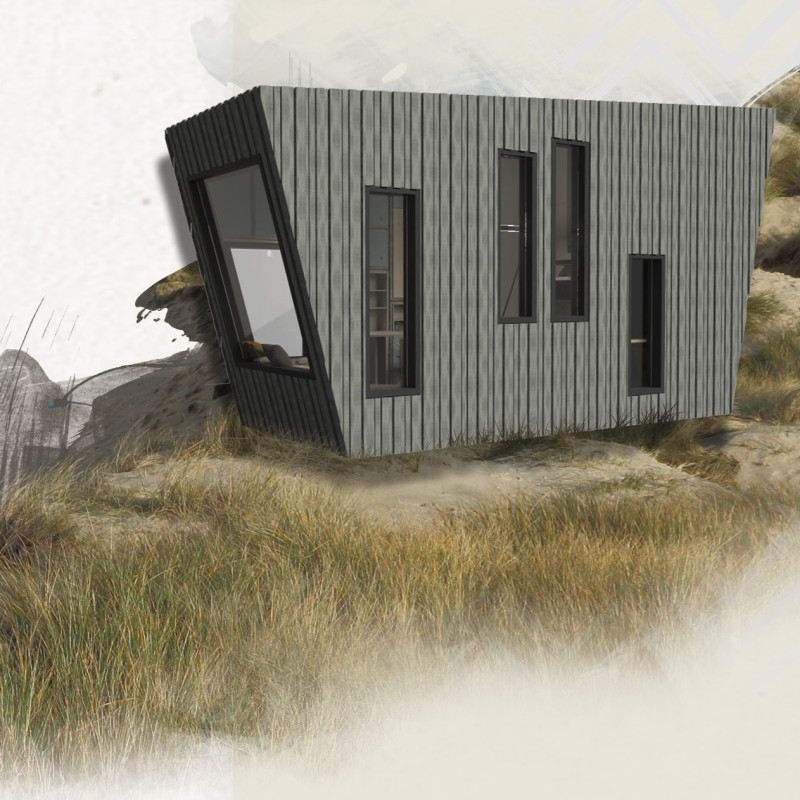5 key facts about this project
The design is situated between the gentle dunes and the North Sea coast, aiming to create a sustainable living space for its residents. The layout incorporates key principles of energy efficiency and resource management. With a focus on blending into the natural landscape, the design addresses essential modern needs while promoting eco-friendly practices.
Energy Generation
The roof is designed to generate solar energy, providing enough electricity for two residents. This feature not only serves energy needs but also includes a power storage system for excess production. This stored energy can be used for heating and hot water, supporting a sustainable lifestyle.
Water Management
Rainwater collection plays an important role in the functionality of the design. A marsh plant purification system is located on the roof, which treats rainwater and recycles wastewater to enhance usability. A recycling shower reduces fresh water consumption to just 10 liters per use, exemplifying practical resource management.
Spatial Arrangement
Large windows throughout the home frame views of the sea, providing a visual connection to the surroundings. These windows allow ample natural light into the space, creating a warm and inviting atmosphere. A light shaft further enhances natural illumination, ensuring that daylight reaches even the more secluded areas of the house.
Material Selection
The structural elements of the building are made from cross-laminated timber, which is known for its effective thermal properties. This choice helps maintain comfortable temperatures while aligning with sustainable building practices. Seagrass, sourced locally, serves as insulation, valued for its breathability and natural qualities. The exterior features CO2-treated spruce wood, typical of Scandinavian design, promoting durability and environmental harmony.
A notable detail is the use of cork mats, which provide sound insulation. This addition fosters a peaceful atmosphere within the home, ensuring that daily life remains calm and undisturbed by external noise.


















































